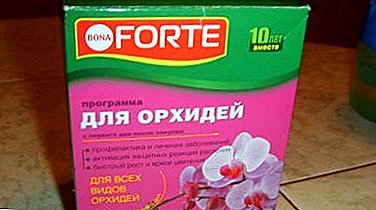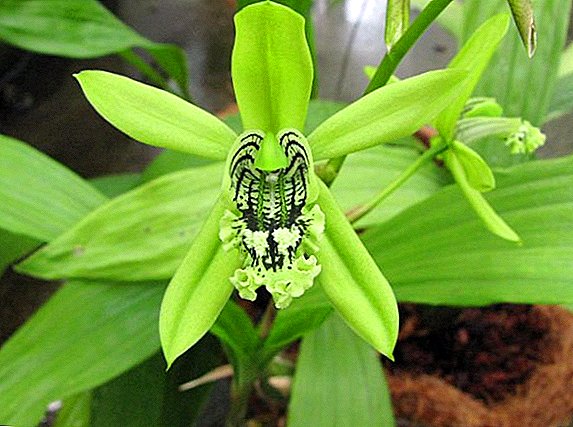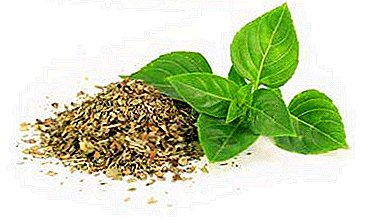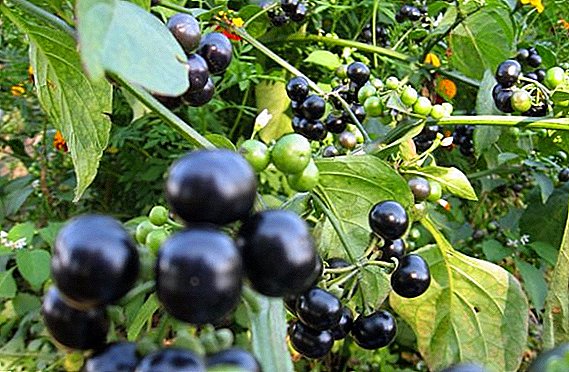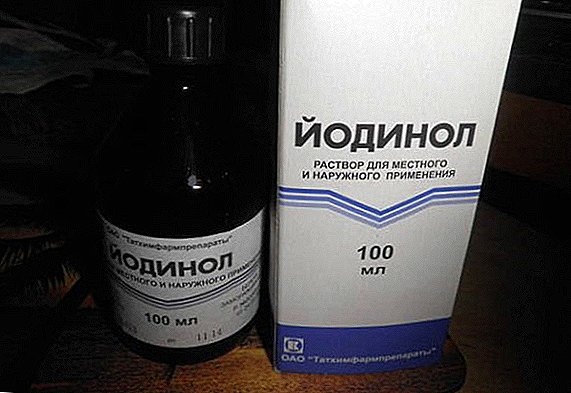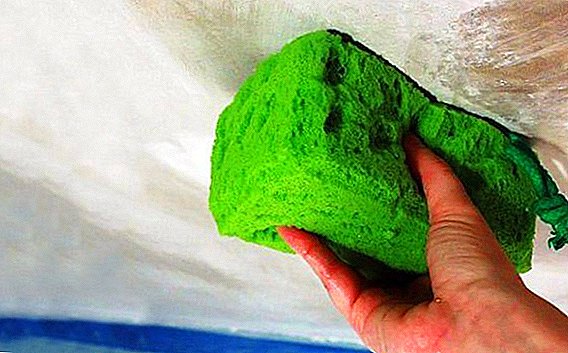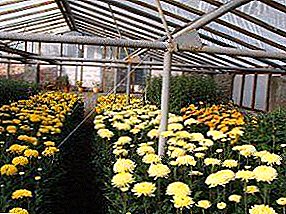
"Flower - the sun". So translated from Greek is the name of the herb of the Astrov family.
Chrysanthemum is in high demand. Perennial and annual unpretentious plants grow well in open areas.
In recent years, gardeners prefer to set aside greenhouse beds for chrysanthemums.
Also on our site you can see information about the features of growing roses and tulips in the greenhouse.
Why in the greenhouse?
- Only in closed ground can achieve almost year-round flowering.
- In the greenhouse chrysanthemums are protected from natural enemies: snails, caterpillars. In an open flower bed, one caterpillar is capable of destroying all the buds from a bush during the night.
- From the length of daylight depends on the quality and duration of flowering chrysanthemums. In the greenhouse lighting is easy to adjust.
- Large-flowered species for cutting are sensitive to a decrease in temperature and humidity. In the greenhouse it is possible to get rare varieties.
How to equip a greenhouse?
If you plan to grow chrysanthemums in the warm season (spring - autumn), any greenhouse with a film coating will do. Enough take care of ventilation and abundant watering. For year-round cultivation, you need a stationary greenhouse with a strong frame and high-quality covering material (for example, from polycarbonate). We'll have to adjust the heating system and additional lighting.
Variety selection
 More than one hundred and fifty species of chrysanthemum are known, selection work is ongoing. It is better to choose zoned varieties, resistant to temperature extremes and diseases, with an average or late flowering period.
More than one hundred and fifty species of chrysanthemum are known, selection work is ongoing. It is better to choose zoned varieties, resistant to temperature extremes and diseases, with an average or late flowering period.
In greenhouses, Indian chrysanthemums (a large species group with large flowers) and Korean (with small flowers of various shapes and colors) bloom well. Large-flowered chrysanthemums have a high strong stalk, decorative inflorescences up to 18 cm in diameter. Reach a height of 80 cm.
Recognized greenhouse varieties:
- Luyone;
- Indianapolis;
- "Polisade";
- "Princess Anne";
- "Festival";
- "Diplomat".
For cultivation in closed ground Varieties will do:
- Talaxi;
- Nimbo;
- "Sudis";
- "Dramatic";
- "Alenushka";
- "Saba".
Breeding options
Chrysanthemums are propagated by seeds, cutting and dividing the bush.
Growing chrysanthemums from seeds.
Painstaking method and not always giving the expected result.
There are two ways to get a complete plant:
- Plant seeds in open ground in spring, when the threat of late frosts.
- Grow seedlings from seeds.
In the garden at a distance of 20 cm from each other pitted, spill them with warm water. In the resulting slush down 2-3 seeds, sprinkled with earth.
 From above cover with a film before emergence. The first shoots should be watered with any liquid fertilizer and carefully loosen the soil.
From above cover with a film before emergence. The first shoots should be watered with any liquid fertilizer and carefully loosen the soil.
Do not cover with film. When the seedlings grow to 10 cm, leave one strong shoot, the rest are removed.
With this method of growing flowers, chrysanthemums will start no earlier than autumn.
This will require shallow boxes with a drainage system (put clay on the bottom or take containers with a grate bottom). Pour a small layer of soil (you can buy ready-made soil), spread the seeds on top, press lightly to the ground (perennial varieties) or sprinkle with a thin layer (annuals).
Spray with warm water cover with a film before germination. Ensure that the earth does not dry out. The temperature in the room should not be below 23 degrees. Shoots appear in two - two and a half weeks. Immediately you can not remove the film. Open plants gradually. First, give "breathe air" no more than an hour, each day increasing the time of ventilation.
In the video information about growing chrysanthemums from seeds:
Seedlings must be thinned in the stage of 3-4 true leaves. Too elongated or weak plants to remove. It is advisable to lower the temperature in the room to 16 - 18 degrees and provide illumination with an LED lamp. Mandatory dressing mineral fertilizers.
Reproduction by cuttings
The best way to grow chrysanthemum technology "managed flowering." Allows you to plan the planting time depending on the desired time of receiving the flowers. For cuttings take shoots from the main root (mother liquor). Choose a leaf with a kidney and make a cut above it. The cuttings are cut to a length of seven centimeters, the end is moistened with a growth biostimulator (“Kornevin”, “Etamon”).
Additional information in the breeding video of chrysanthemum by cutting method:
You can immerse the cuttings in a solution of warm water with honey for four hours (half a teaspoonful of 0.5 liters of oxen). A layer of well-moistened soil is laid in a box, two to three centimeters of river sand are poured on top. Need to know! Sand Pre-calcine in order to destroy pathogens.
Cuttings stuck in the sand at an angle of 45º. The room should not be hot, keep the soil constantly wet. Replant to a greenhouse when cuttings take root. It will happen in three weeks.
 The method of grafting grown seedlings from a bouquet.
The method of grafting grown seedlings from a bouquet.
- Remove leaves and buds from the plant.
- Cut off the top, leaving 8-10 cm of the plant. Put the cutting in the water.
- Wait for the roots to appear in the greenhouse.
Reproduction by dividing the bush.
Easiest but unproductive way. Apply in early spring, before the growing season. The bush is dug out, free from the clod of earth. A knife is divided into several parts without damaging the roots. In each leave three strong escape. Numb, rotten clean. After dividing chrysanthemums planted in the ground and watered abundantly.
Useful tips in the video on the reproduction of chrysanthemums by dividing the bush:
Features of growing
How to grow chrysanthemums in a greenhouse? Chrysanthemums are unpretentious, ready to forgive the novice growers a number of errors. Simple rules will allow you to get a healthy, strong, regularly flowering plant.
Soil preparation.
Chrysanthemums demanding soil acidity. The indicator should be 6.5 - 7 pH (neutral) or slightly alkaline (7.5 - 8 pH). Under greenhouse conditions, a bed for chrysanthemums is prepared from garden soil and sod, with the addition of river sand and humus (a bucket per 1 square meter).
Increased acidity drown ash, lime, dolomite flour. Recommended mineral fertilizers. Be sure to treat the soil from pests: shed with boiling water or copper sulfate solution.
Planting cuttings.
It can be carried out in the greenhouse at any time of the year. Based on the calculation that from the time of planting cuttings to obtain a full-fledged flower it will take at least four months.
Favorable time for landing is early morning or evening. Cluster cuttings are planted at a distance of 40 cm from each other. Between single-stranded varieties enough to leave 20 cm. Roots are not much buriedthey grow parallel to the ground.
Proper watering.

- chrysanthemum moisture-loving plants. Watering should be plentiful. Water flowers prefer soft. Ideal - rain or thawed. To soften, you can add to 1 liter of 3 grams of ash;
- Do not allow water to enter the leaves. Regular moisture to the roots of chrysanthemums will provide drip irrigation system;
- slow down the process of dehydration of soil loosening;
- the level of humidity in the greenhouse during the period of plant growth should be within 75%. When buds appear, moisture is reduced to 65%. To increase the duration of flowering watering reduced to a minimum.
Temperature and light conditions.
Chrysanthemum likes a lot of light and moderate temperatures. Rooted cuttings will develop rapidly at a temperature not lower than 18 degrees. During the formation of buds, the temperature in the greenhouse is reduced to 12 degrees. An adult plant can withstand cold temperatures of up to - 3 degrees, but the buds will die.
Light mode is adjusted depending on Chrysanthemum development phases:
- Growing cuttings need a long light day (up to 18 hours). For winter chrysanthemum forcing, important indicators are the light intensity and spectral composition. Provide a comfortable environment. help LED or sodium lamps.
- When the first buds appear, the day is shortened to 10 hours. In the summer, for this purpose, use a black film.
- Large flowered chrysanthemums require complete darkness at night, otherwise they will not bloom.
- For the regular formation of shoots to maintain the night temperature of 16 - 20 degrees.
Important avoid dew on leaves. This leads to plant disease.
Feed recommendations
Chrysanthemums need mineral fertilizers. At the first stage, nitrogen fertilizers are applied. They contribute to the growth of green mass and strengthen the root system. During the development of flower shoots and bud formation potash supplements are needed. For a long lush flowering phosphate fertilizers are applied.
Every seven to ten days feed infusion of mullein or chicken manure (1 liter for each plant). Prepare like this: pour a bucket of litter (or two buckets of mullein) with water, leave for three days. Liter infusion dilute ten liters of water.
Fertilizers are applied strictly under the root in a moist soil. Contact with leaves and flowers will cause burns. Excess fertilizer is more dangerous than deficiency. Excess fertilizing causes chrysanthemum depression.
Diseases: prevention and treatment
Chrysanthemum hardy plantresistant to pests. Diseases are the result of improper care.
Typical mistakes.

- high air temperature. Leaves burns. Chrysanthemums love the sun, but do not tolerate heat well above 25 degrees;
- violation of watering. An excess of moisture leads to rotting of the roots. When there is a shortage of water, the leaves turn yellow, the plant drops buds;
- pests;
- spider mite;
- aphid.
What to do?
Dilute a piece of soap in 10 liters of warm water. Spray once every ten days. Skip the garlic head through a meat grinder, leave for thirty minutes in a bucket of water (10 l), drain. Garlic water spray chrysanthemums. You can wipe the leaves, but it is more time consuming.
The main enemy of chrysanthemums - nematode. Blackened lower leaves speak of infection. Fight is useless. Sick plants must be burned. On our site, you can additionally get acquainted with the types of nematodes and how to deal with them.
Growing in a greenhouse chrysanthemum, can bring a good income to the owner. In any case, these long-flowering bright, diverse shapes and colors, plants will be a garden decoration.
General recommendations for growing chrysanthemums in the video:


